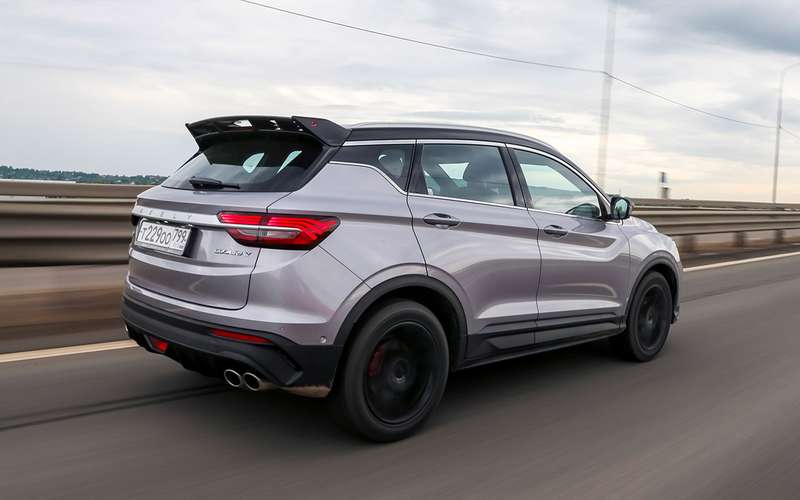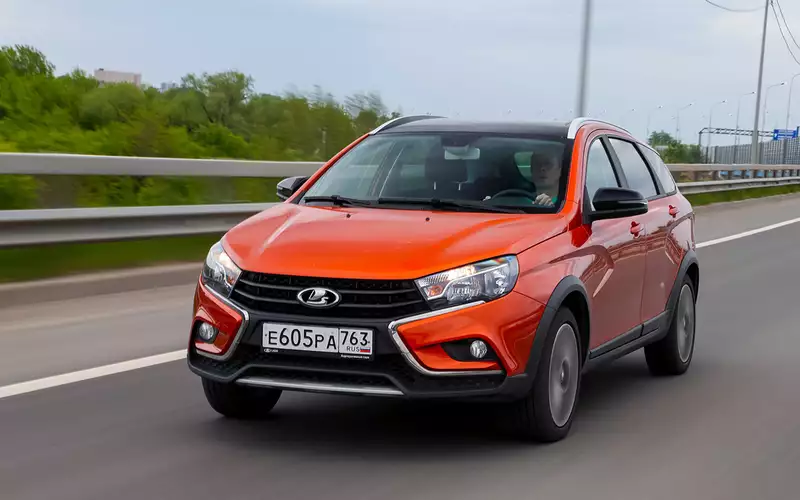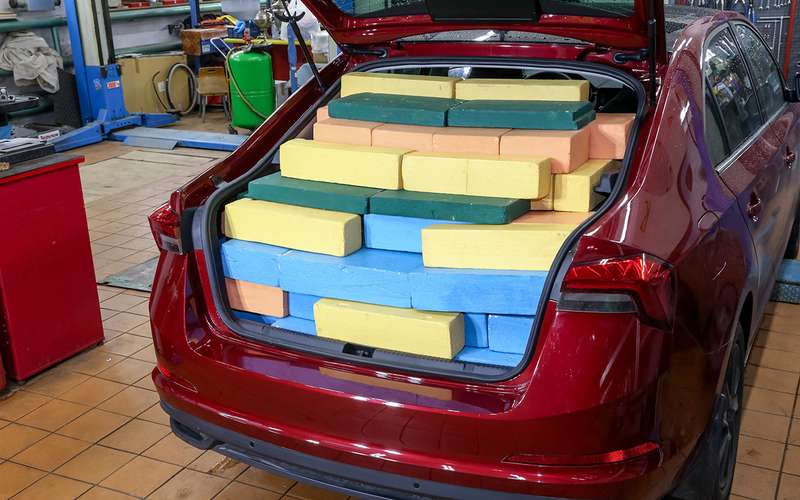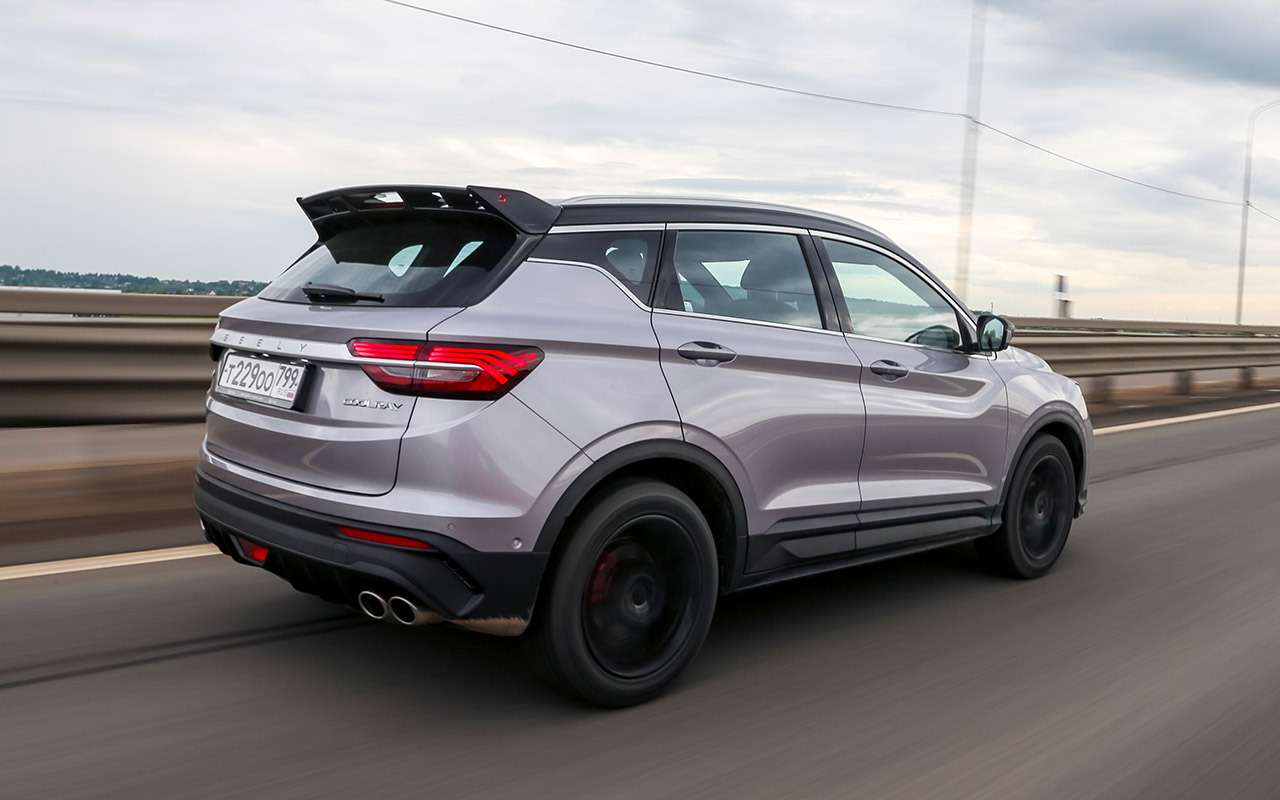Read here how the popular “Chinese” the size of Cretu and Duster, the Lada Vesta station wagon and the Skoda Rapid liftback competed for the title of the most “economical” crossover Geely Coolray.
Who is lying?
Almost always, during our own measurements of the volume of the trunk, we are confronted with a difference in the values obtained and the manufacturer’s data.
The reason lies in the measurement technology. Even the same model in different markets can have different boot volumes.
Two main methods are accepted in the world – the American SAE (J1100_200911 standard) and the European VDA (DIN 70020 standard).
The American methodology is rather tricky. The trunk is filled with real luggage – the specified suitcases, bags and even a bag for golf clubs. In addition, the latter determines which clubs should be in it.
The volume is filled from small to large, and the remaining space can be filled with boxes of 152 × 114 × 325 mm. The standard does not specify the level to which the suitcase must be loaded. Therefore, many manufacturers hide the trunk up to the ceiling. Hence the paradox that the Ford Focus hatchback has more trunk than a sedan.
The European method of measurement is stricter and in the case of a suitcase combined with a passenger compartment, it must be loaded strictly up to the curtain or shelf. But the trunk volume in Europe is larger, which makes it more pleasant for manufacturers. The trunk is filled with standard one-litre cubes. This approach naturally fills the volume more efficiently.
Our journal methodology differs from both standards and is based on the experience of the Dmitrov test site. For measurements, we use standard “bricks” with a volume of eight liters, as well as four-liter cubes of three types of shapes. We ship, just like in Europe, up to the curtain. And without undue modesty, we say that our method most accurately reflects the true capabilities of the cargo hold.
Alternatives used
For every car in our resale test, there is a good and reasonably fresh alternative with the same body type and for the same money.
Instead of the new Vesta SW, you can find a two- or three-year-old Kia Ceed SW. A pre-styling car with a mileage of 50-60 thousand km will cost about one and a half million rubles. It is very likely that there will be a 1.6 engine (128 hp) and an automatic transmission under the hood. Dynamics are not breathtaking, but with reliability in order. Before restyling, cars with a basic engine had independent rear suspension – now there is an elastic beam, which did not have the best effect on handling.
For the price of a simple Rapid you can buy another Czech liftback – Octavia. There may not be enough money for a current generation car, but for the previous Octavia A7 2019-2020 it’s decent, and with a 1.4 (150 hp) or 2.0 (180 hp) turbo engine.
The advantages are obvious: capacity, dynamics, tuning of the chassis. Although the turbo engine and the robot have recovered from teething problems, diagnostics can do no harm.
The simplest Geely Coolray costs over two million. With this budget, the second-generation 2018 Mazda CX-5 seems like a good option. With a base engine of two liters (150 hp), automatic transmission and four-wheel drive. Mazda has no weaknesses apart from thin paint. So, after buying the front part of the body, it is better to fix it in a protective film.



MANUFACTURERS DETAILS:
|
|
Geely Coolray |
Lada Vesta SW Cross |
Skoda Rapid |
|
Roadworthy / gross weight |
1415 / 1715 kg |
1350 / 1730 kg |
1227 / 1732 kg |
|
Acceleration time 0-100 km/h |
8.4 sec |
11.2 seconds |
9.0 sec |
|
Maximum speed |
190 km/h |
180 km/h |
208 km/h |
|
Fuel / fuel reserve |
AI-92, AI-95 / 45 l |
AI-92, AI-95 / 55 l |
AI-95 / 55 l |
|
Fuel economy: urban/extra-urban/combined |
7.8 / 5.4 / 6.4 l/100 km |
10.7 / 6.4 / 7.9 l/100 km |
7.1 / 4.4 / 5.5 l / 100 km |
|
ENGINE |
|||
|
Kind of |
petrol |
petrol |
petrol |
|
Place |
front, transverse |
front, transverse |
front, transverse |
|
Configuration / number of valves |
R3 / 12 |
R4 / 16 |
R4 / 16 |
|
Working volume |
1477 cm³ |
1774 cm³ |
1395 cm³ |
|
Current |
110 kW / 150 hp at 5500 rpm |
90 kW / 122 hp at 5900 rpm |
92 kW / 125 hp at 5000-6000 rpm |
|
Couple |
255 Nm at 1500-4000 rpm |
170 Nm at 3900 rpm |
200 Nm at 1400–4000 rpm |
|
TRANSFER |
|||
|
drive type |
front side |
front side |
front side |
|
Transfer |
R7 |
M5 |
R7 |
|
Gear ratios: |
3.53 / 2.81 / 1.4 / 1.05 / 1.09 / 0.86 / 0.73 / 2.91 |
3.73 / 2.09 / 1.39 / 1.10 / 0.89 / — /- / 3.54 |
3.50 / 2.09 / 1.34 / 0.97 / 0.93 / 0.78 / 0.65 / 3.72 |
|
headgear |
4.65 / 3.44 |
4.20 |
4.80 / 3.43 |
|
CHASSIS |
|||
|
Suspension: front / rear |
MacPherson / elastic beam |
MacPherson / elastic beam |
MacPherson / elastic beam |
|
Send |
rack, with EUR |
rack, with EUR |
rack, with EUR |
|
Brakes: front / rear |
disk vented / disk |
||
|
Ties |
215/55 R18 |
205/50R17 |
195/55R16 |
SERVICE IN NUMBERS
|
|
Frequency of maintenance |
Guarantee |
Dealers |
|
Geely Coolray |
10,000 km or 12 months |
5 years or 150,000 km |
95 |
|
Lada Vesta SW Cross |
15,000 km or 12 months |
3 years or 100,000 km |
300 |
|
Skoda Rapid |
15,000 km or 12 months |
3 years or 100,000 km |
129 |
TRUNK MEASUREMENTS
|
|
Trunk volume to curtain, l |
Trunk volume up to the ceiling, l |
Threshold height, mm |
Tailgate open height, mm |
The maximum size of the long length, mm |
Boot opening dimensions: width × height, mm |
|
Geely Coolray |
264 |
348 |
702 |
1758 |
1696 |
1051×869 |
|
Lada Vesta SW Cross |
376 |
500 |
737 |
1883 |
1783 |
976×770 |
|
Skoda Rapid |
428 |
532 |
717 |
1980 |
1923 |
1009×1041 |
EXPERT RATING OF CARS
|
Fashion model |
Geely Coolray |
Lada Vesta SW Cross |
Skoda Rapid |
|
Driver’s workplace |
|||
|
Chair |
eight |
9 |
9 |
|
Governing Bodies |
9 |
eight |
9 |
|
Review |
eight |
eight |
eight |
|
Salon |
|||
|
the front of |
9 |
9 |
eight |
|
Backside |
9 |
eight |
9 |
|
Trunk |
7 |
eight |
9 |
|
Driving Performance |
|||
|
dynamics |
9 |
7 |
9 |
|
brakes |
9 |
9 |
9 |
|
Manageability |
9 |
eight |
9 |
|
Comfort |
|||
|
Noise |
eight |
eight |
eight |
|
Smooth operation |
eight |
9 |
7 |
|
climate |
9 |
9 |
9 |
|
Adaptation to Russia |
|||
|
geometric patency |
eight |
9 |
7 |
|
Maintenance |
7 |
9 |
eight |
|
Exploitation |
7 |
eight |
eight |
|
Overall rating |
eight.27 |
8.40 |
8.40 |
“Behind the wheel” can also be read in Yandex.Zen.
Za Rulem experts loaded the station wagon, crossover and liftback to the top, compared the dynamics and made a detailed technical guide.











